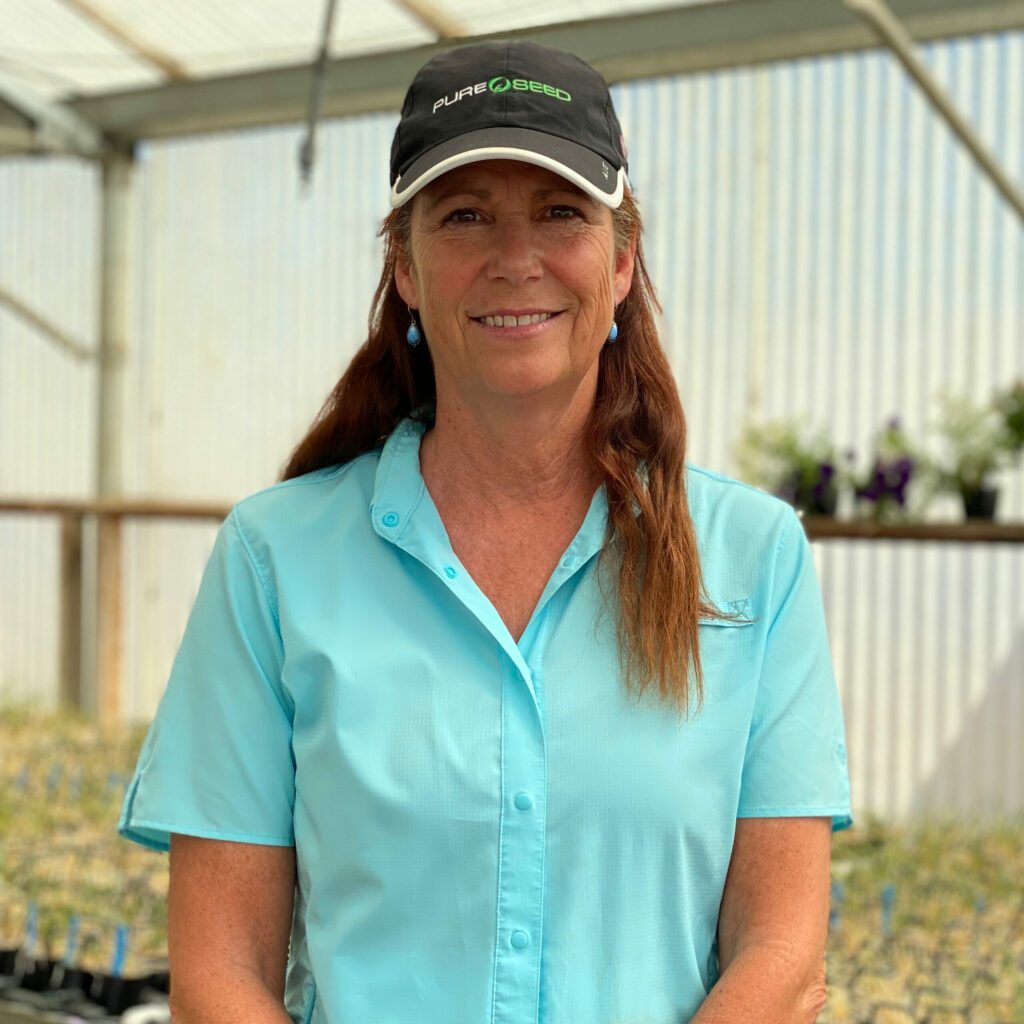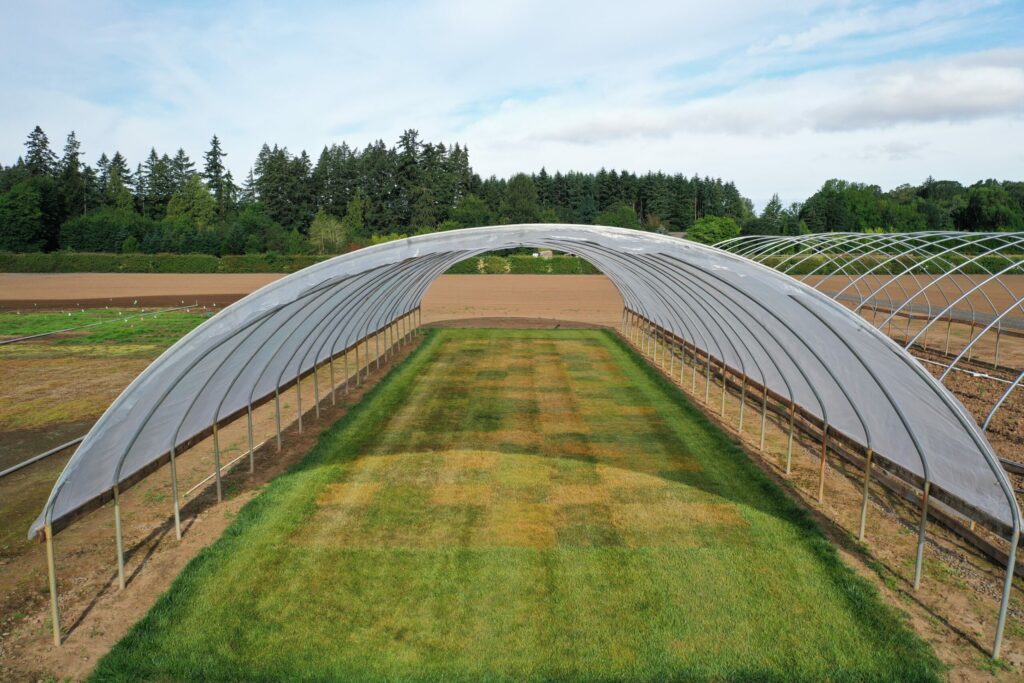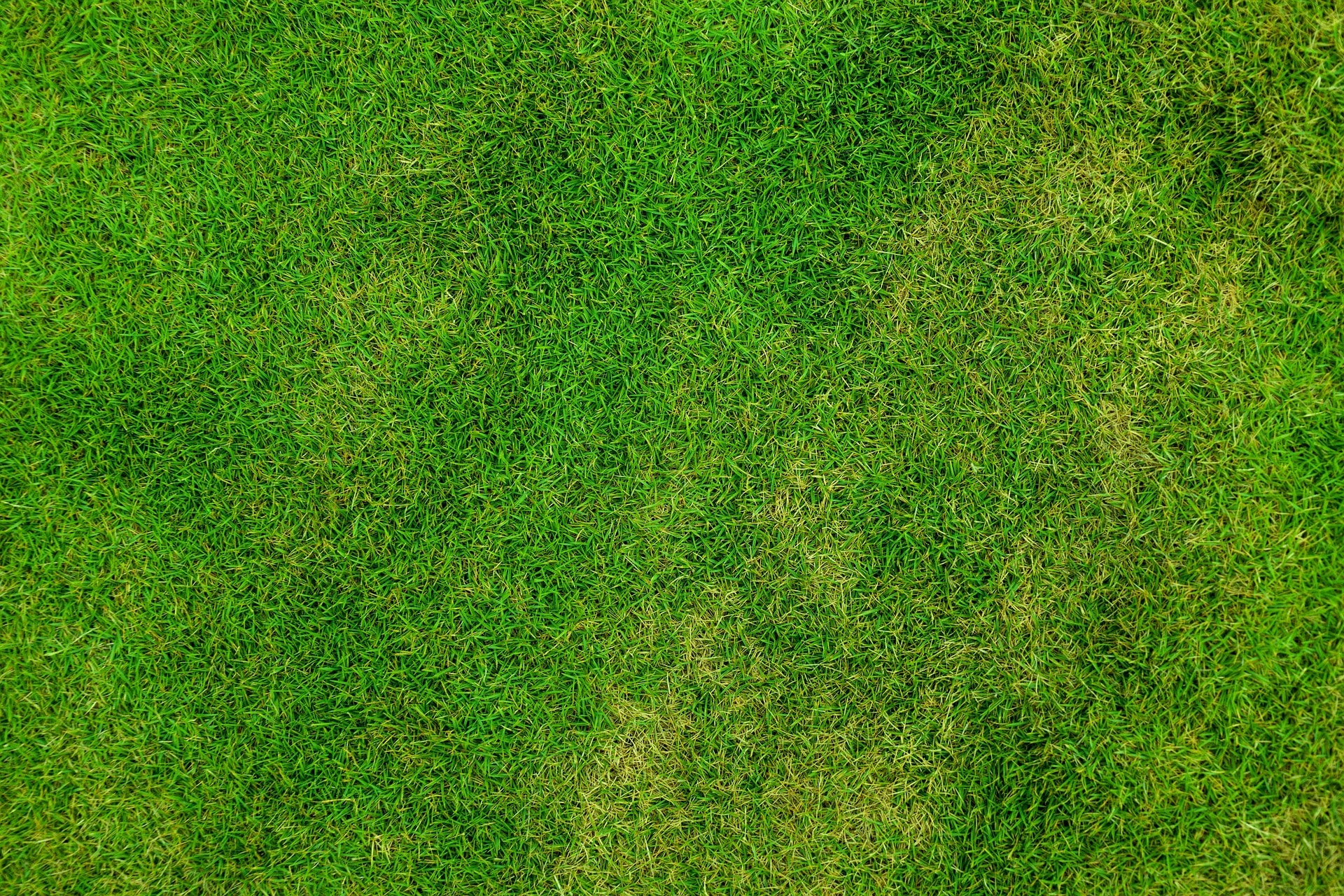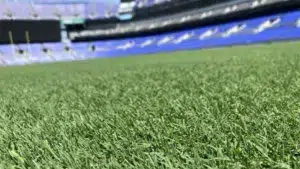Turfgrass cultivars are branching into water efficiency.
It is almost a cliché that the three most important qualities a farmer looks for in a new field crop variety or hybrid are yield, yield and yield. Not so for new turfgrass cultivars. As seasonal weather patterns seem to be trending toward increased growing temperatures and greater annual variations, water availability is becoming a critical issue, particularly in the Western United States. Water use efficiency and drought tolerance are the new turfgrass benchmarks.
Oregon is the world’s largest producer of cool-season forage and turf grass seed. Mild and moist winters and dry summers with little or no humidity from June through September favor seed production. More than 390 seed conditioning plants located in Oregon’s Willamette Valley prepare the seed for market. Besides the efforts that go into developing and trialing new cultivars, there is also considerable effort devoted to helping seed growers and turfgrass users better understand grass’s water needs and drought tolerances.
Turfgrass Water Conservation Alliance
Without objective performance data, an unscrupulous marketer can make unsubstantiated claims about a turfgrass variety. Unlike most field crop performance evaluations where yield data is obtained by weight, most turfgrass performance is subjective. There is a continual need to reduce the amount of subjective-based performance data.
“Years ago, we were really getting tired of it when one party would say, ‘We have brown-patch resistance,’ and then all companies claim to have brown-patch resistance,” says Crystal Fricker, president of Pure Seed Testing. “The USDA National Turfgrass Evaluation Program (NTEP) helps validate many things, but drought tolerance is difficult to do. That is when we started working on ways to have third-party validation. We worked with universities. Some locations are not as dry as we are here in Oregon. We got several university people together to help and advise us on how to quantify this.”
In 2010, a group of turfgrass seed producers, marketers and distributors set aside their competitive differences to form the Turfgrass Water Conservation Alliance (TWCA), a 501 c(3) non-profit organization committed to water conservation. The common belief among the founding members was that by using objective performance data to support improved plant materials, the seed industry could raise end-user awareness about varietal differences in water use efficiency and drought tolerance. The intended result was to reduce the water needs of the managed turfgrass environment while preserving the vital ecological services provided by green spaces. The need for objective data led to implementing digital image analysis with Kenneth Hignight, NexGen Research, director of Research and Doug Karcher, turfgrass researcher at the University of Arkansas.

“We were then able to quantify how much green turf there was, not just a subjective, visual observation,” Fricker says. “I might rate a plot as being 50% green, and you would say 40% green. That is when we began getting good, repeatable quantification of these numbers.” This information is repeatable and reliable across locations and researchers. Everybody’s numbers are reliable, uniform and truly objective. TWCA could then say precisely what a turf plot’s green cover is. There were no opinions to it.”
“When we talk about TWCA, we are the industry leader in identifying and evaluating drought-tolerant cultivars,” says Jack Karlin, TWCA program administrator. “In 2014, we wrote protocols for drought evaluation. Objective data is so important. It is easy to talk to people about turf and water use, but the people we need to talk to are not in the turf industry. They are professional landscapers and elected government officials whose decisions are paid for with tax-payer dollars. They are accountable for their decisions. We need to be able to come to them with objective data and show a quantifiable difference in water use by different varieties. With this factual information, their hands are tied. They have no excuse for randomly selecting water-guzzling varieties.”
A benefit of the TWCA program is that testing results put a number on a variety’s drought tolerance performance. The collected test data can identify a variety that uses 30% less water to maintain a given level of green cover through the summer. It is important for end-users, regulators and decision-makers to have something objective to point to and reference their decisions. They can have a quantifiable data point. It is a big thing for to have a physical record to follow the thousands of visual records that TWCA takes every year.
TWCA trials usually have 50-60 cultivars at locations across the United States. The program’s biggest limitation is space. Each location must be able to keep the cultivars in rainout shelters. Karlin says this is one of the reasons why their trials are not enormous. TWCA obtains objective, science-based measurements of drought tolerance and rate of recovery with a portable lightbox and digital camera. Each digital image is analyzed to determine the amount of green cover for each cultivar. The program has standardized the cameras and light bulbs used in the lightboxes to make certain all samples are evaluated equally.
Evaluation methods have changed into a more precise, technological way to analyze and rate turf. Over the past 10 years, the analytical software provided by the University of Arkansas has improved. According to Karlin, that tool has been a real game-changer is as far as how fast it can evaluate the images and the accuracy as well. Although it has come a long way, evaluating uniformity is still challenging. By testing with universities and research collaborators in locations across North America, TWCA eliminates confounding factors such as soil type, heat, and pest management from the results.
Most recently, Pure Seed Research has been using drones to collect data. “It is really cool to see the trials from above and observe the variation in the trial,” Fricker says. “Now you can see that out of 100 entries, there may be only 10 that are green. The rest are various shades of brown. We can visually see out of all the varieties, which are the top ones. It is enjoyable when you can walk out there and pick the best ones. They are saving water. This should make a difference in the market. It should add value for everyone involved. We have the objective data to substantiate our observations.”
Twenty years ago, Pure Seed Testing and NexGen Turf Research, a subsidiary of Pennington Seed, were two of the first breeders anywhere to do work with drought-tolerant grasses. It was an easy thing for them to do drought tolerance research because Oregon’s dry, hot summer conditions make it easy to see differences between turf plats. Both companies are now active members of the TWCA.
“We see big differences between species where we have to water some more than others to keep them green. Anytime we see differences as a breeder, we get very excited because we are always looking for the cream and the best plants in any situation,” says Fricker. “Drought is a topic that is near and dear to our hearts. My family in California is always aware of water. You must not take too long to wash your hands because we have to conserve water. I was aware of that and am now always looking for ways to develop new plants that we do not have to water as much.” By focusing on how plants respond to watering, the TWCA began to realize that everybody tends to overwater turfgrass; they could keep grass healthy and reduce water use.
“As I was traveling around the world and looking at golf courses, I remember one golf course in Costa Rica where they were spending too much on water. It was like a marsh out there,” Fricker recalls. “They had vegetative paspalum at the time. I told them they did not have to water it so much. Then they came to a golf course meeting in the United States and met with turf management experts. And sure enough, they were able to save a ton of money by reducing their water bill.”
That experience led researchers at the TWCA to look for more ways to use grasses for erosion control, for home lawns and sports turf in such a way that does not use excessive resources. Even more than conserving resources, they were looking for solutions that protect and benefit our environment by using not only less water but also poor quality water. Grass breeders have been working on saltwater for many years. That melds well with improving water use efficiency because some varieties are salt tolerant as well as being drought tolerant.
“We have always looked at water as a huge resource that turfgrass could work well with if we just understand how much water it actually needs and how little we need to apply,” Fricker reports. “In the summer, if a grass goes dormant, there is a point where you should realize that you really don’t need to water. It becomes a low-maintenance turf. Look at the prolonged drought in Portland where people didn’t water. As soon as it rains, everybody suddenly has a green lawn. That is another sign that if you can get by with a month or two of dry turf, the rest of the year the grass looks great. It is realigning expectations for some of our turfgrasses and then finding the ones that extend that green period. It is exciting for us to come together with other breeders and put our varieties together in trials where we can test them and see where we can push the limits. We can see how long we can go between watering and how much water do they really need? When we start doing this with every species, we learn a lot about the differences in water use in turf grasses.”

Reliable Data for Everyone’s Benefit
Reliable data helps growers because the drought-tolerant variety is much easier to grow and produce seed as long as it makes seed heads. There is also an added value for seed distributors. Objective data provides distributors a story that they can tell. Growers can use a different tall fescue that uses the water with salt tolerance.
“We told that story to a sod farmer in southern California,” Fricker explains. “He later called to tell me that he never believed the stories and the sales pitches that salespeople gave him. When we showed him with objective data how one of our varieties had both salt and drought tolerance, he thought he would give it a whirl. Every summer, he would plant tall fescue and salt would stunt it. It would take over a year for him to grow it into sod. Then he planted salt-tolerant varieties. At a time when the salt and heat usually reach their peak, the new varieties are growing, are healthy and they look beautiful. On top of that, they do not get diseases. They save us tons of money on my fungicide bill because they are also disease resistant. That is our goal. We are trying to find grasses that have more solutions to problems for the end-user.”
These new varieties are starting to impact everyone. A landscaper or home building contractor who wants to put in sod for the home can have the story that it uses half the water.
“That is what we are trying to do with this water qualification,” Fricker says. “We are getting real traction with municipalities and areas where water is precious as in Colorado, California and Utah.”
Everybody likes to believe that grass just sucks water out of the ground and gives no benefits. In reality, there are many plants that use more water than grass, produce less oxygen, do not protect the whole soil structure, do not reduce the temperature around the home or provide any of the other benefits that grass provides. Consumers need varieties that say to them: “It is still okay to plant grass.” As the seed industry is able to identify the right grass and the right species for each environment, everyone in the entire supply chain, from the seed growers to end-users, benefits.













